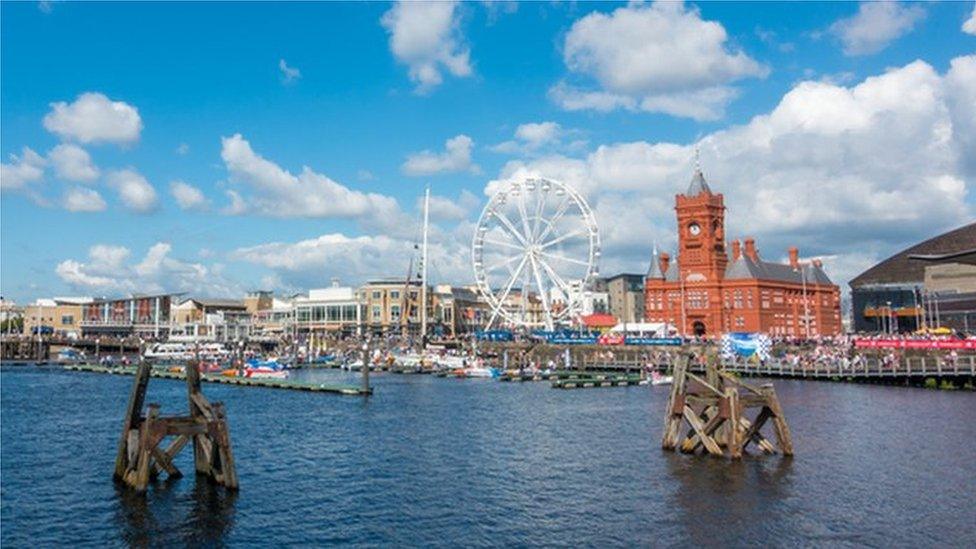Cardiff's Museum of Military Medicine has Deep Space 8K plans
- Published
The technology is already being used at the Museum Of The Future in Austria
A £30m military medicine museum planned for Cardiff Bay hopes to become the first in the UK to offer a super-high definition 8K immersive video space.
The technology, called Deep Space, will offer 2D and 3D visuals, exploring science, medicine, art and history.
The project would see the Museum of Military Medicine (MMM) move from Keogh Barracks to Cardiff Bay in 2022.
Alongside exhibitions and "immersive" visitor experiences, the visual room could also be used to train doctors.
The new four-storey building would be built in Harbour Way, near the Norwegian Church. It is on the site of an old visitor centre, known as "the Tube".
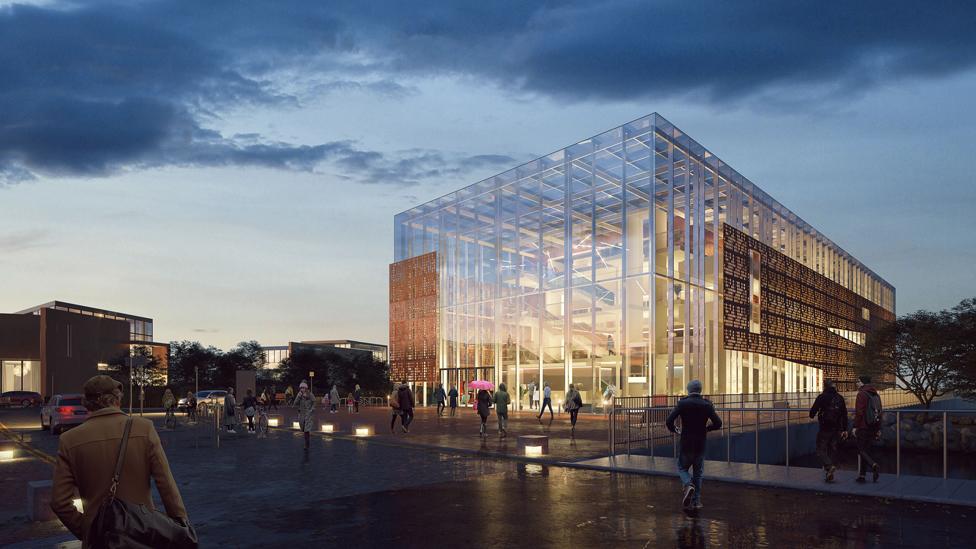
An artist's impression of the museum, which it is hoped would attract 250,000 visitors a year
What would the museum look like?
The current Museum of Military Medicine (MMM) has nearly 20,000 objects and archive from different corps
It tells the story of how war - despite its horrors - has led to medical advancements in the likes of X-rays, trauma and burns care
It will also showcase medical innovations - with its facilities used as a teaching environment for students and young doctors.
There are estimates of 250,000 visitors a year with the aim of marketing it as a major attraction with Visit Wales
It would be only the second time the Deep Space technology has ever been used - it was pioneered by the Museum of the Future in the city of Linz, Austria.
What happens at the Museum of the Future in Austria?
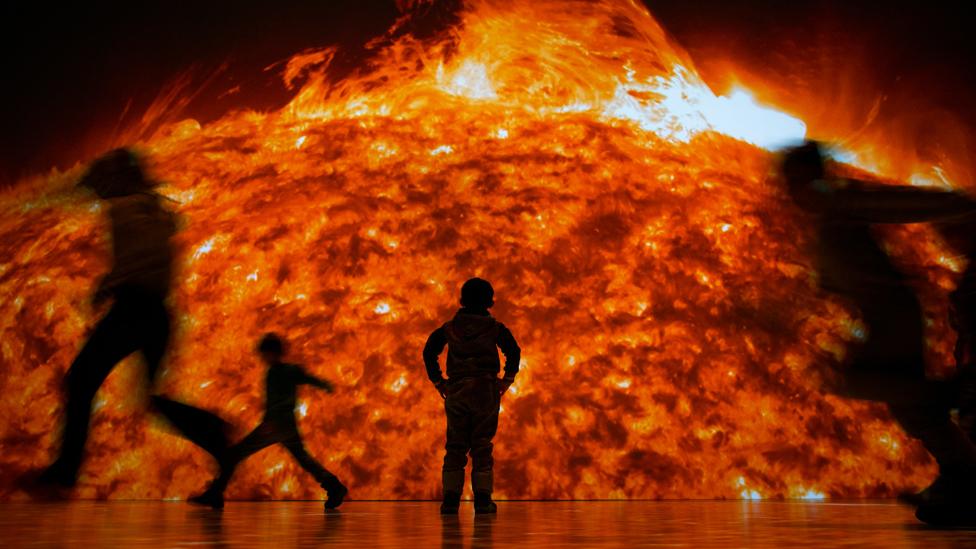
'Sun' shows people the Sun's enormous power in 8K
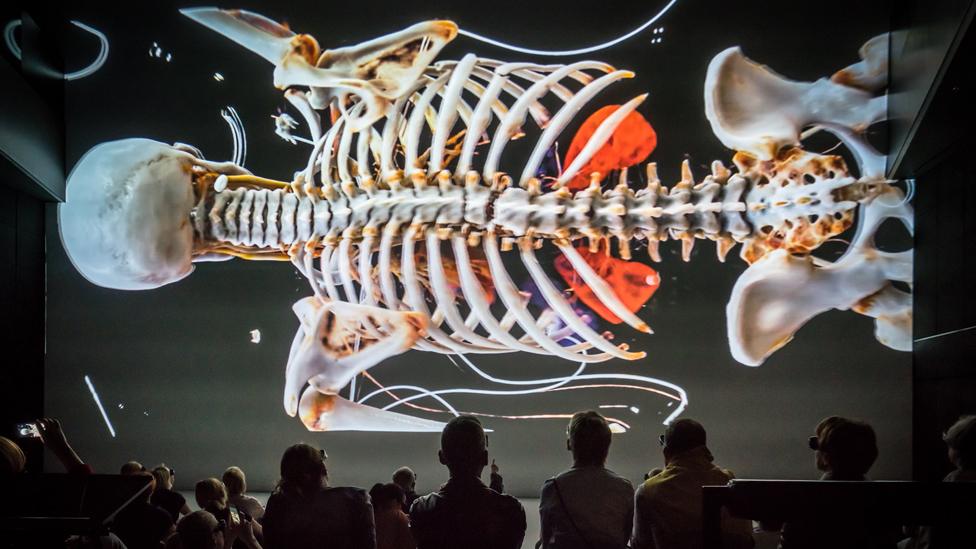
Deep Space technology showing the human body
Ars Electronica - or Museum of the Future - cost about £30m to build when it opened in Linz. Its galleries look at the human body, robotics, technology and AI.
But its Deep Space projection room presents huge 3D and 2D visuals and high resolution imagery on the wall and floor - which can be art, history or science - or even music shows. Once a week it is taken over by medical students.

Gerfried Stocker, artistic director at Ars Electronica, said the technology created a space people could move around and interact in.
"The sheer size of the projection is very important - this changes the way we present material, it also brings very detailed resolution," he said.
For medical students, it turns into a lecture hall, giving details of the human body and organs, projecting complex details of bones and joints.
The facility has also been used to broadcast live surgery - with the audience able to follow every step of a procedure in pinpoint detail.
And because MRI images of real patients can be displayed in 3D, the space can be used by surgical teams preparing for complicated operations, allowing them to "walk through" a patient's body in advance.
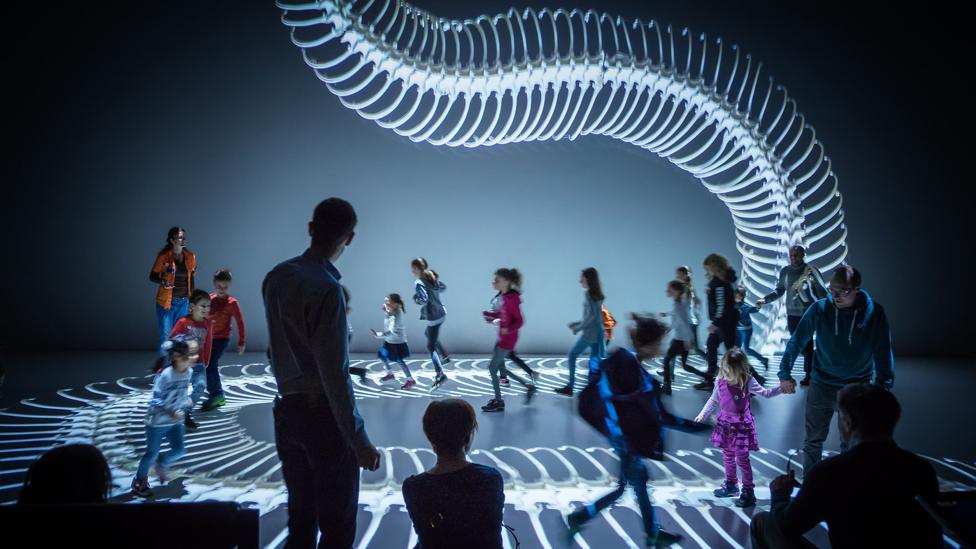
A family experience with Deep Space 8K technology
"It's like a science fiction movie in a small submarine making a journey through the human body," said Gerfried.
"From inside out you can understand it in a different way. This is not the standard model of the human anatomy either - we can show every injury or problem the real body has in detail, with images from computers and MRI and converting it into high quality 8K on the screen."
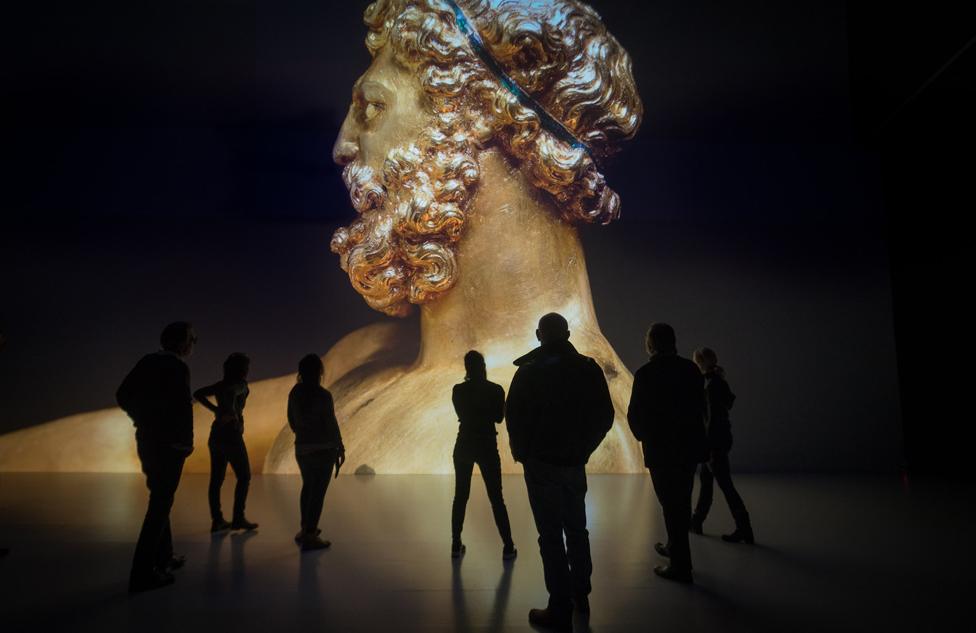
Boosting tourism
Linz is Austria's third largest city but smaller than Cardiff, with a population of just over 200,000. Ars Electronica attracts about 500,000 visitors a year, including to its associated festivals.
Those in the city say it has helped put Linz on the map and brought visitors - including school parties - from all over Austria, Germany and Italy.
Doris Lang-Mayerhofer, city councillor responsible for culture and tourism, said: "Linz is a very industrial city, but over 40 years it's transformed from a grey, steel city to a very creative, open-minded, cultural city.
"Ten years ago we were European Capital of Culture - and we're proud of that and also Ars Electronica.
"It's very international - as well as art, science and society - it asks people to think outside the box. People want to see it, it's our signature brand. The focus is not just about the technology but the impact on lives, the humanity."
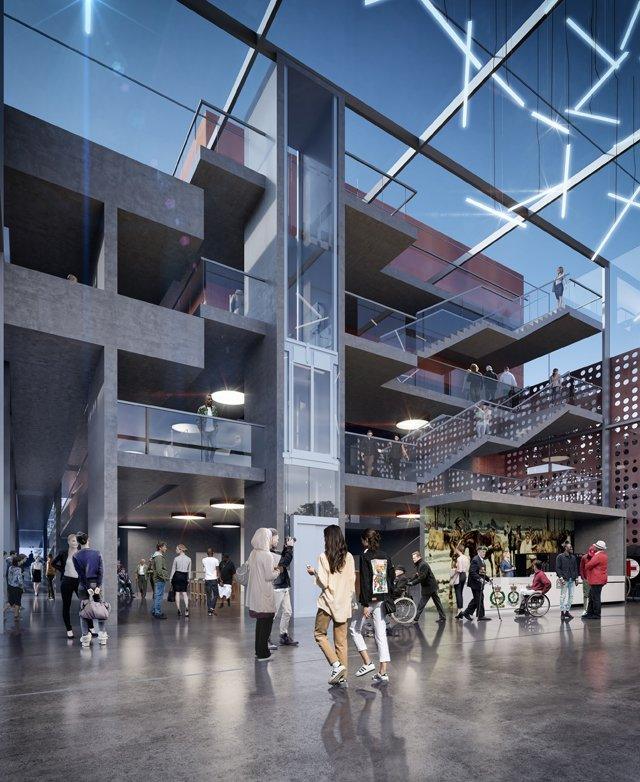
What happens next?
MMM's proposal to move to Cardiff and to transform the museum was first announced in 2016 and is now in the planning process, with a date for a decision expected in early 2020.
It would involve relocating an old lock-keeper's cottage to a spot nearby.
If given the go-ahead, it is hoped building work would start early in 2021 with opening by the end of 2022.
The museum said it was "actively fundraising, with a mix of grants and investment" but not intending to need public money.
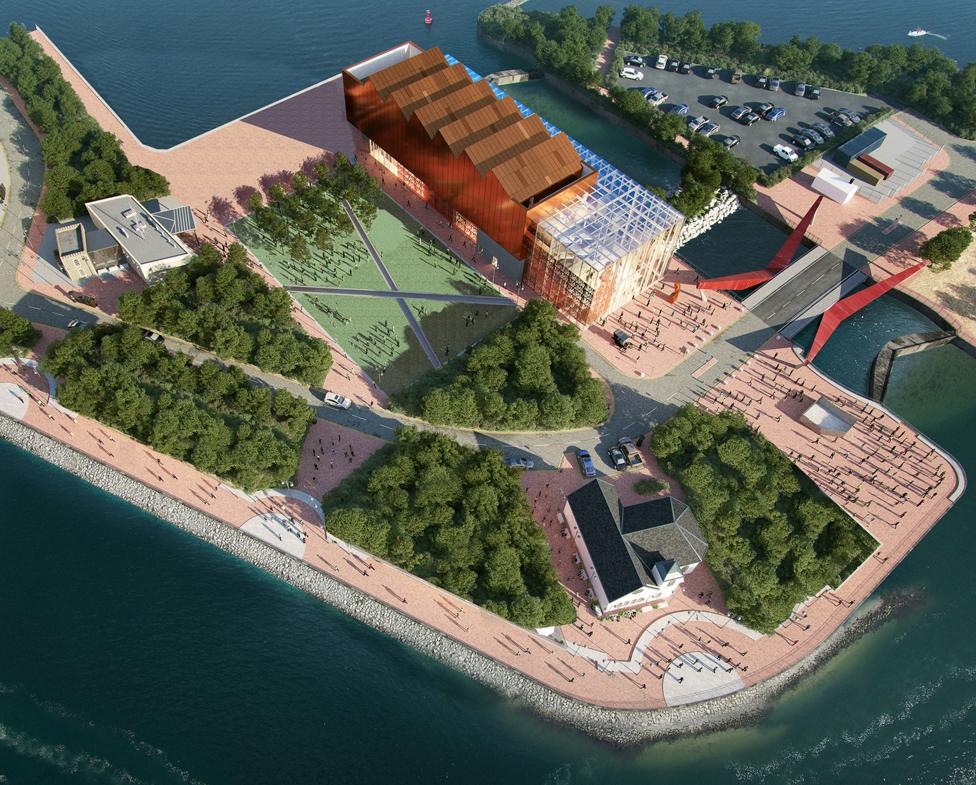
The museum would be on land near the Norwegian Church in Cardiff Bay
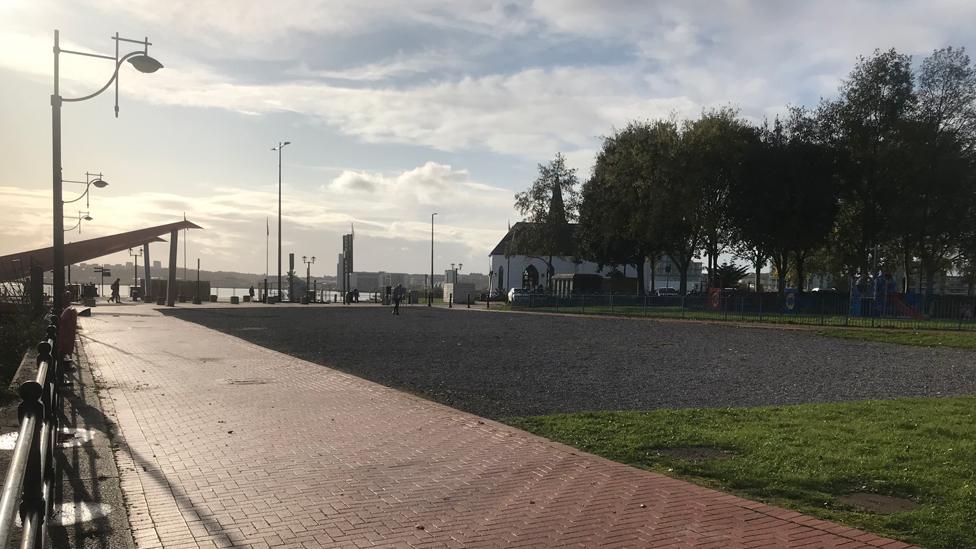
The Norwegian Church was reconstructed here in 1992
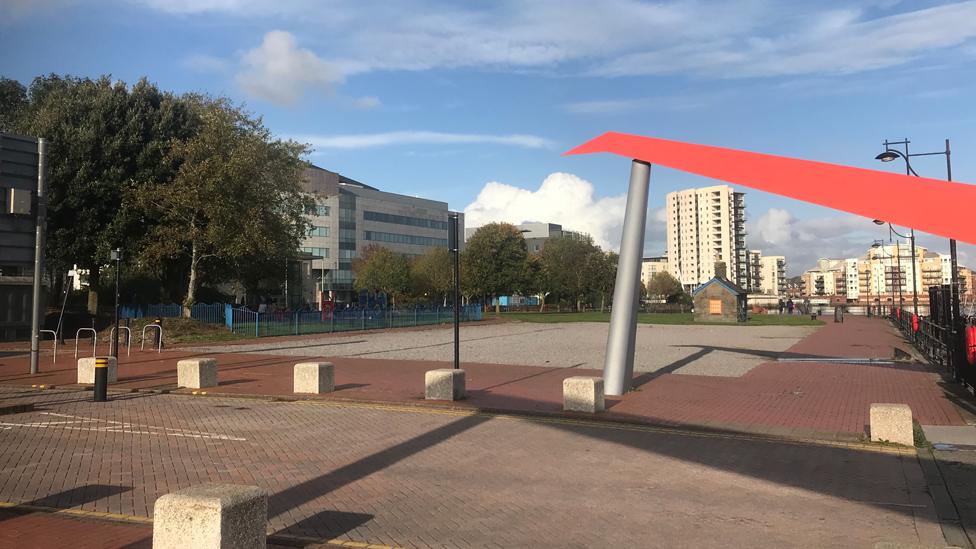
A lock keeper's cottage on the site - centre right in the photo- would have to be relocated in the Bay, according to the plans
One of the key aims of the Cardiff museum is to inspire children to become interested in medicine and healthcare.
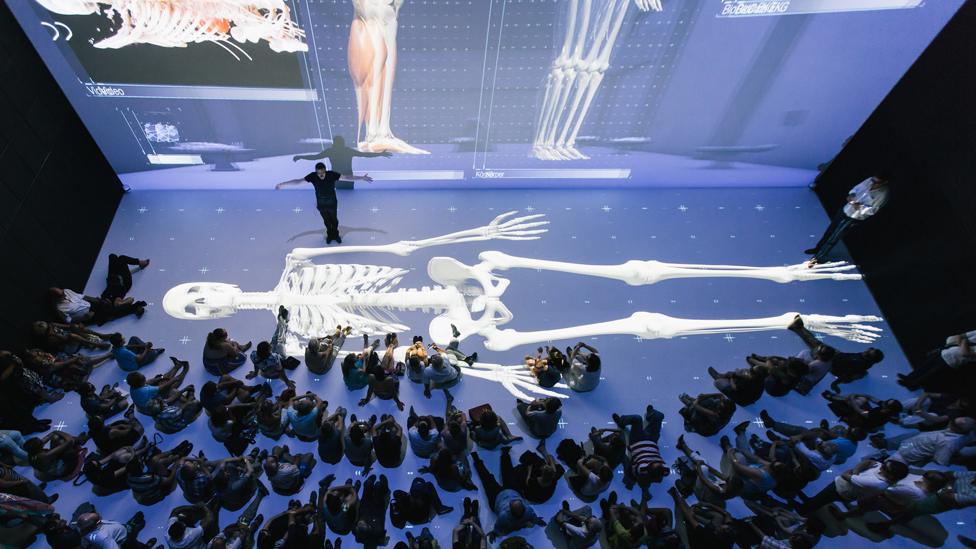
Anatomy learning in the Deep Space room
Jason Semmens, director of the MMM, said: "We've had an amazing amount of support in bringing it to Cardiff.
"Our existing set-up is quite limited and means we can't expand. So it gives us a chance to re-think what the museum is about.
"Perhaps what people don't realise is how many of the advances in military medicine actually went on to benefit the wider population.
"It's a story of innovation and one of the reason we went to Linz was because they've developed this very innovative, revolutionary way of presenting their story with Deep Space and that fits in with our objectives very well."
- Published3 July 2017
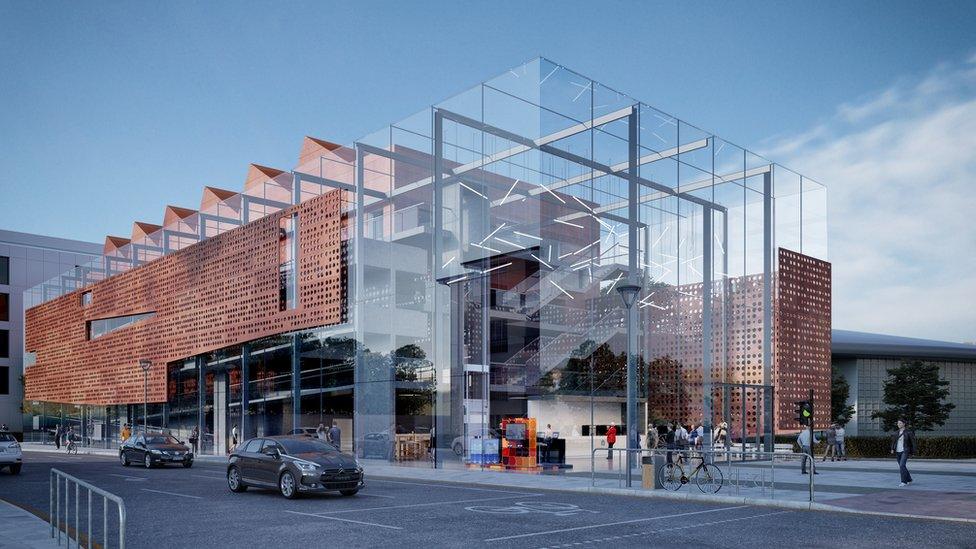
- Published13 August 2017
